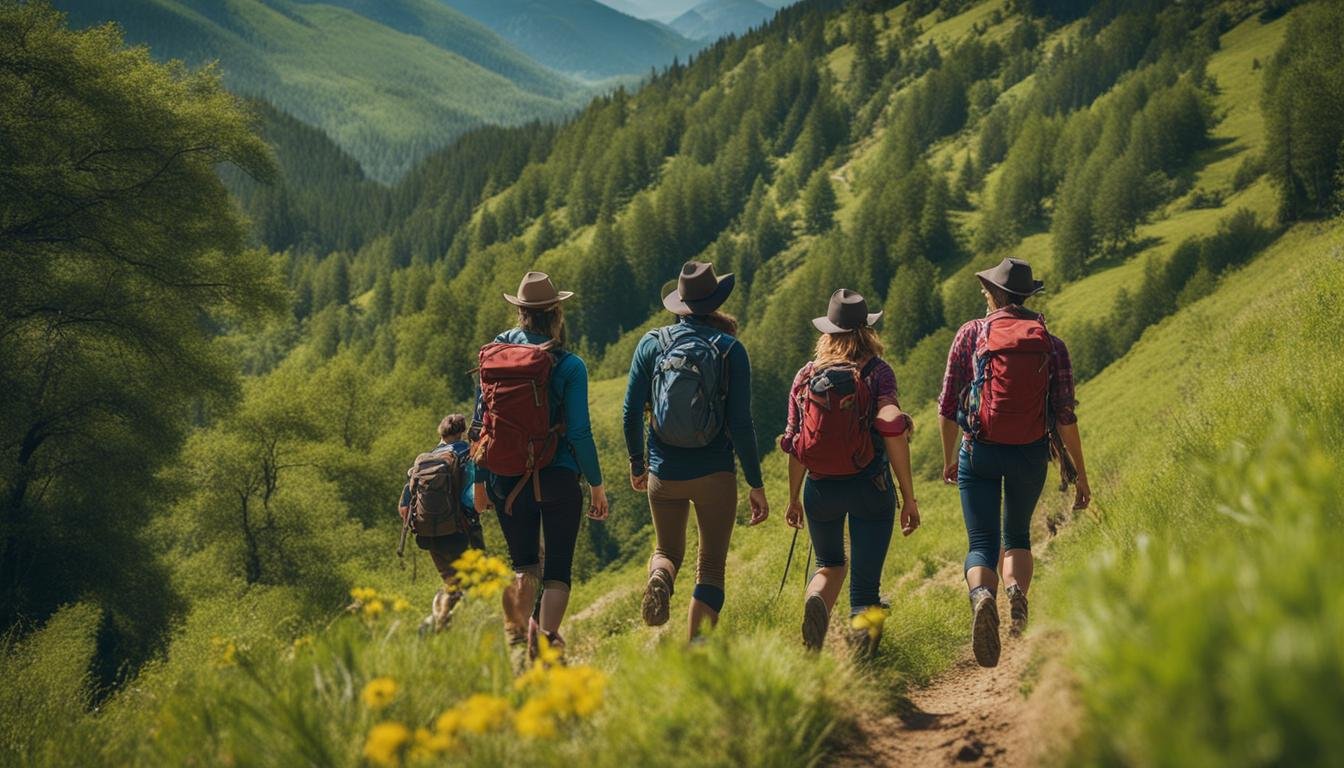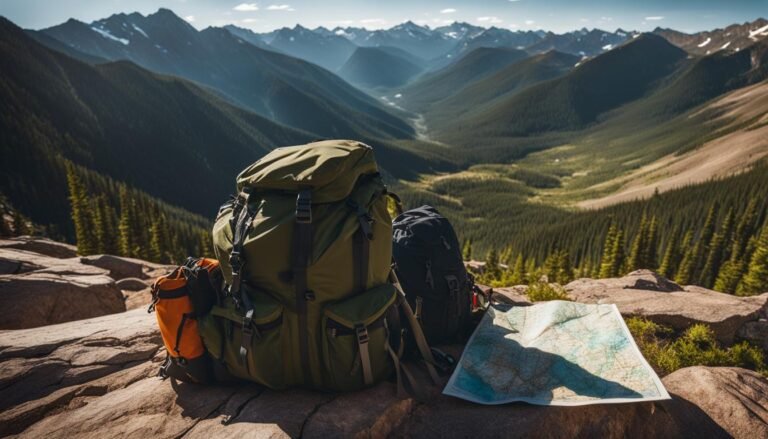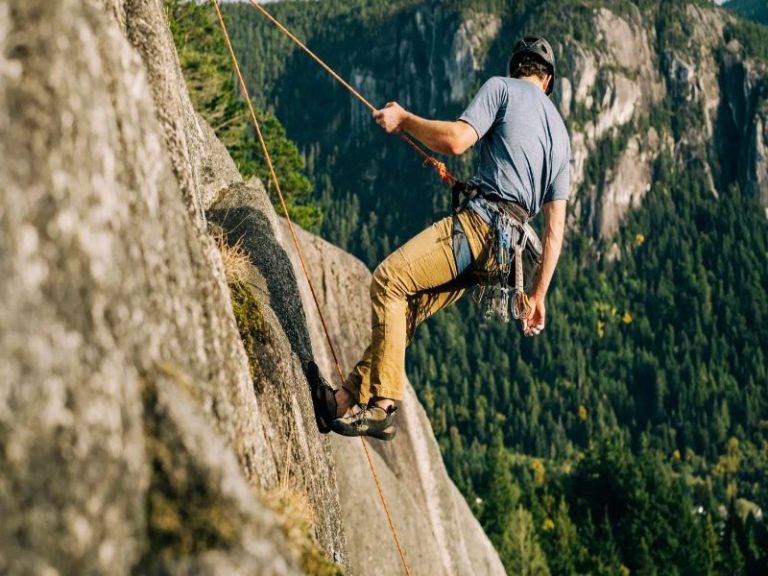The Fun of Hiking in Cowboy Boots
Are you ready for a unique hiking experience? Strap on your cowboy boots and hit the trails! Hiking in cowboy boots can add a touch of Western style to your outdoor adventures. Cowboy boots are known for their durability and ruggedness, making them a popular choice for cowboys and outdoor enthusiasts alike.
While cowboy boots may not be the most suitable footwear for longer hikes or frequent hiking trips, they can still bring a sense of fun and adventure to your outdoor activities. So lace up your boots, grab your hiking gear, and get ready to explore the great outdoors like a true cowboy!
Key Takeaways:
- Cowboy boots can add a touch of Western style to your hiking adventures.
- While not the most suitable footwear for long hikes, cowboy boots can still bring a sense of fun and adventure to your outdoor activities.
- Choose the right hiking gear and be prepared for the challenges that come with hiking in cowboy boots.
- Consider investing in dedicated hiking footwear for a more comfortable and safe hiking experience.
- Remember to enjoy the journey and embrace the cowboy spirit as you explore the trails in your favorite boots.
Why Cowboy Boots Are Not Ideal for Hiking
Cowboy boots may be a popular choice for hiking among newcomers to the activity, but they are not the most suitable footwear for longer hikes or frequent hiking trips. While cowboy boots boast durability and protection against snakes and rugged terrain, they lack the essential features that guarantee comfortable and safe hiking experiences.
The elevated heel of cowboy boots can cause instability on challenging terrains, increasing the risk of tripping. Additionally, their leather soles offer inadequate traction on wet surfaces, making them less reliable on slippery trails. Moreover, cowboy boots are not breathable, which can lead to blistering and discomfort during long hikes.
To ensure a more enjoyable hiking experience, it is highly recommended to invest in dedicated hiking footwear. Specialized hiking boots provide the necessary traction, support, and breathability for a comfortable and safe hike. These boots are designed with features such as sturdy soles, cushioned footbeds, and breathable fabrics to enhance performance and minimize the risk of injuries.
“While cowboy boots may have their place in fashion and certain outdoor activities, they are not the ideal choice when it comes to hiking due to their design limitations and lack of key features.”
| Cowboy Boots for Hiking | Comfortable Hiking Boots for Cowboys | Tips for Hiking in Cowboy Boots |
|---|---|---|
| Lack of traction on wet surfaces | Dedicated hiking boots provide reliable traction on various terrains | Gradually break in cowboy boots to prevent blisters |
| Instability on challenging terrains | Hiking boots offer stability and support | Choose the correct size for a snug fit |
| Not breathable, leading to discomfort and blisters | Hiking boots are designed with breathable materials for enhanced comfort | Wear moisture-wicking socks to prevent moisture buildup |
While cowboy boots may have their place in fashion and certain outdoor activities, they are not the ideal choice when it comes to hiking due to their design limitations and lack of key features. Investing in a pair of comfortable hiking boots designed specifically for hikers, including cowboys, is essential for an enjoyable and safe hiking experience. Remember to gradually break in your boots, choose the correct size, and consider wearing moisture-wicking socks to prevent discomfort and blisters while hiking in cowboy boots.
Alternatives to Cowboy Boots for Hiking
When it comes to hiking, cowboy boots may not be the most suitable footwear choice. However, there are several alternatives available that are better suited for this outdoor activity. Here are some of the best hiking boots for cowboys:
Trail Runners
Trail runners are lightweight, breathable, and offer excellent traction on various terrains. They are the preferred choice for many hikers, especially in warmer conditions. With their comfortable fit and durability, trail runners are a great option for cowboys looking for a hiking shoe that can keep up with their active lifestyle.
Hiking Shoes
For those who need more durability and protection, hiking shoes are the way to go. These shoes have a thicker construction and better padding compared to trail runners. They are suitable for hiking in rocky or wet terrains, providing the necessary support and stability. Hiking shoes are a reliable choice for cowboys looking to tackle rugged terrains.
Mid-Height or Full-Height Hiking Boots
If you plan on hiking in wet or cold seasons, mid-height or full-height hiking boots are the best choice. These boots provide the necessary ankle support and protection from the elements. With their sturdy construction and enhanced traction, they are designed to handle rugged terrains and keep your feet dry and comfortable.
When choosing the right alternative to cowboy boots for hiking, take into consideration the specific hiking conditions and your personal preferences. The right footwear can make all the difference in ensuring a safe and enjoyable hiking experience.
| Hiking Footwear | Features | Best for |
|---|---|---|
| Trail Runners | Lightweight, breathable, excellent traction | Warmer conditions |
| Hiking Shoes | Durable, better padding, suitable for rocky or wet terrains | Rugged terrains |
| Mid-Height or Full-Height Hiking Boots | Ankle support, protection from elements, enhanced traction | Wet or cold seasons |
The Drawbacks of Hiking in Cowboy Boots
While cowboy boots may exude a sense of rugged charm, they are not the most suitable footwear for hiking trails. The limitations of cowboy boots become apparent when faced with the challenging terrains and conditions encountered during outdoor adventures. Here are some of the main drawbacks of hiking in cowboy boots:
Lack of Traction: Cowboy boots are designed with leather soles that do not offer sufficient grip on slippery or wet surfaces. This lack of traction can increase the risk of slips and falls, jeopardizing your safety on the trails.
Instability: The elevated heels of cowboy boots, a signature feature of their design, can cause instability on uneven or rocky terrains. This can lead to an increased risk of tripping and twisting your ankle, making hiking in cowboy boots less secure.
“Hiking in cowboy boots can lead to several drawbacks. The lack of traction and stability on hiking trails can increase the risk of falls and injuries.”
Lack of Comfort: Cowboy boots are not designed with padding or cushioning typically found in hiking footwear. This lack of comfort can result in discomfort, blisters, and even fungal infections during long hiking trips, detracting from the enjoyment of your outdoor adventure.
To fully enjoy your hiking experience and ensure your safety, it is advisable to invest in better footwear specifically designed for hiking. There is a wide range of hiking boots and shoes available that offer superior traction, stability, and comfort, allowing you to fully embrace the beauty of nature without compromising your safety and well-being. So, leave the cowboy boots for other occasions and opt for footwear that will enhance your hiking experience.
| Drawback | Impact |
|---|---|
| Lack of Traction | Increased risk of slips and falls |
| Instability | Risk of tripping and ankle injuries |
| Lack of Comfort | Discomfort, blisters, and fungal infections |
Tips for Comfortably Hiking in Cowboy Boots
While cowboy boots may not be the ideal choice for hiking, there are some tips that can help make your hiking experience more comfortable if you prefer to hike in them. Here are some tips to keep in mind:
- Break in your boots: Gradually break in your cowboy boots before going on a hike to ensure a better fit and prevent blisters. Wear them around the house or on short walks to help them adapt to your feet.
- Choose the right size: Make sure you choose the correct size of cowboy boots that provide enough space for your heel while fitting snugly around your toes. Ill-fitting boots can lead to discomfort and pain during long hikes.
- Shift weight to your heels: To improve stability and reduce the risk of tripping, try to shift your weight slightly to your heels while hiking in cowboy boots. This can help counterbalance the elevated heel and provide better support on uneven terrains.
- Wear moisture-wicking socks: Invest in moisture-wicking socks that help keep your feet dry and reduce the risk of blisters. Avoid cotton socks, as they tend to retain moisture and can lead to discomfort and friction.
Additionally, you can use powder or lubricants on your feet to further prevent friction and blisters while hiking in cowboy boots. These tips can help minimize the discomfort and limitations of hiking in cowboy boots, but it’s important to note that dedicated hiking footwear will still provide a better experience overall.
Remember, the key to a successful hike is to prioritize your comfort and safety. Whether you choose to hike in cowboy boots or opt for specialized hiking footwear, make sure you’re prepared with the right gear and always prioritize your well-being on the trails.
| Tips for Comfortably Hiking in Cowboy Boots |
|---|
| Break in your boots |
| Choose the right size |
| Shift weight to your heels |
| Wear moisture-wicking socks |
The History and Design of Cowboy Boots
Cowboy boots have a rich history that dates back to the early days of horse riding and ranching. Originally designed for practicality and functionality, these boots have become an iconic symbol of Western culture and fashion. The design of cowboy boots has evolved over time, incorporating various features to meet the needs of cowboys and outdoor workers.
One of the key aspects of cowboy boots is their distinctive pointed toe. This design feature originated in the 1940s and was primarily intended to provide a better fit in stirrups while horse riding. The pointed toe not only allows for easier insertion and removal from the stirrups but also adds an element of style to the boots.
Another notable characteristic of cowboy boots is their use of durable and high-quality materials. Traditionally, cowboy boots were made from cowhide, which offered the necessary toughness and resilience for outdoor activities. However, as the popularity of cowboy boots grew, manufacturers began experimenting with other materials such as snakeskin and lizard, adding a touch of luxury and uniqueness to the boots.
“Cowboy boots are more than just footwear; they are a symbol of a way of life.”
In terms of construction, cowboy boots are known for their distinct heel. The heel of cowboy boots is typically elevated to provide stability and balance while riding horses. However, this design feature can be a drawback when it comes to hiking, as it can cause tripping and instability on uneven terrains.
In conclusion, the history and design of cowboy boots showcase their deep roots in Western culture and the practicality they offer for horse riding and outdoor work. While they may not be the most suitable option for hiking, cowboy boots continue to captivate with their unique style and craftsmanship.
| Cowboy Boots | |
|---|---|
| Origin | Western culture and horse riding |
| Design | Pointed toe, elevated heel |
| Materials | Cowhide, snakeskin, lizard |
| Usage | Horse riding, outdoor work |
Conclusion
Hiking in cowboy boots may seem like a fun and adventurous idea, but it’s important to consider their limitations. While cowboy boots are durable and offer protection against rugged terrain, they lack the necessary features for comfortable and safe hiking.
Cowboy boots can cause instability on tough terrains due to their elevated heels and provide little traction on wet surfaces with their leather soles. Moreover, their lack of breathability can lead to blisters and discomfort during long hikes.
To fully enjoy your hiking experience and minimize the risk of discomfort, blisters, and injuries, it is advisable to invest in specialized hiking footwear. Whether you choose trail runners, hiking shoes, or hiking boots, selecting the right footwear designed for the demands of hiking will enhance your overall experience and ensure a more enjoyable time in the great outdoors.
FAQ
Are cowboy boots suitable for hiking?
No, cowboy boots are not ideal for hiking due to their lack of traction, stability, and breathability.
What are the drawbacks of hiking in cowboy boots?
Hiking in cowboy boots can lead to increased risk of falls, discomfort, blisters, and sweaty feet.
What are some alternatives to cowboy boots for hiking?
Trail runners, hiking shoes, and hiking boots are better alternatives for hiking than cowboy boots.
Why are cowboy boots not designed for hiking?
Cowboy boots were originally designed for horse riding and lack the specific features required for hiking, such as proper traction and breathability.
How can I make hiking in cowboy boots more comfortable?
Gradually break in the boots, choose the correct size, shift weight to the heels, wear moisture-wicking socks, and use powder or lubricants to prevent blisters.
What is the history and design of cowboy boots?
Cowboy boots have a long history and were originally designed for riding horses. They feature a traditional design with smooth, gripless soles and are made from animal hides.







